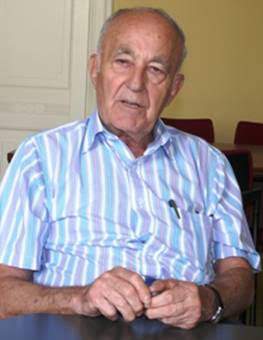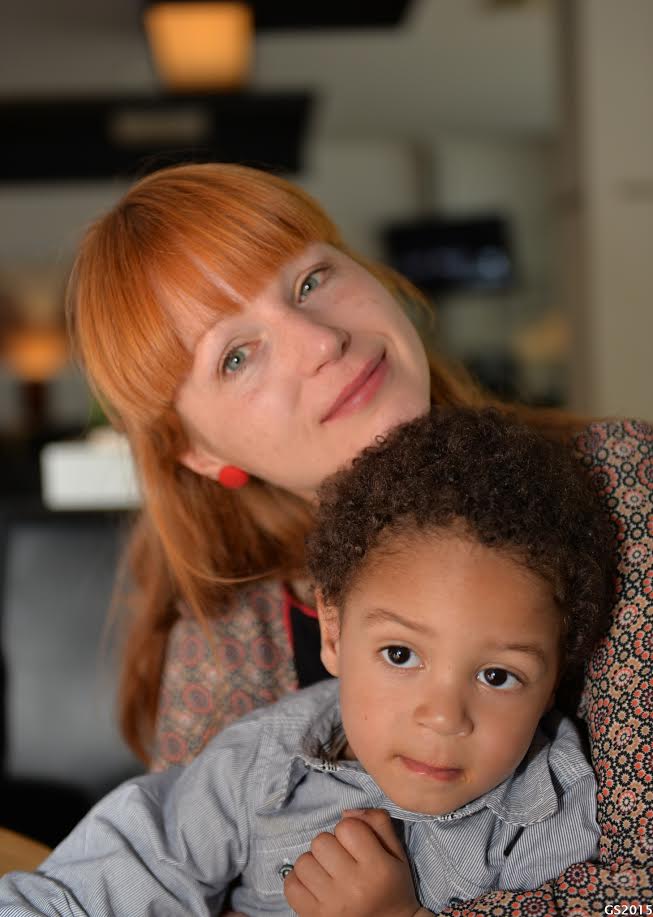
THE VOICE OF INTERNATIONAL LITHUANIA
|
VilNews has its own Google archive! Type a word in the above search box to find any article.
You can also follow us on Facebook. We have two different pages. Click to open and join.
|
Author Archive
Gazprom says to take Lithuania to court, will win
- Posted by - (0) Comment
![]()

Gazprom intends to take the Lithuanian government to court over the situation with the country's gas importer and pipeline operator Lietuvos Dujos, and expects to win, the Russian gas giant's deputy CEO, Valery Golubev, says.
Lithuania's Energy Ministry thinks Gazprom has breached an agreement on the privatization of Lietuvos Dujos, in which Gazprom owns 37.06% of the shares, as it has supplied gas to the republic not "at fair prices."
"We'll go to court, and they'll lose. They'll lose in any court. There's been no breach of obligations [by Gazprom]. The Lithuanian government approved the price formula in 2008, before the Third Energy Package came in. We haven't done anything to put Lithuania in a worse position in 2009 and 2010," Golubev said.
Read more at: www.kyivpost.com
- Bookmark :
- Digg
- del.icio.us
- Stumbleupon
- Redit it
Stimulating publication
- Posted by - (0) Comment
Congratulations for the recent transformation of Vilnews. You have turned it into one of the most stimulating electronic publications on Lithuania. Well done indeed.
Yves Plasseraud, Writer, Paris - France
- Bookmark :
- Digg
- del.icio.us
- Stumbleupon
- Redit it
Beautiful piece of writing
- Posted by - (0) Comment
Many thanks. That is a beautiful piece of writing and a well laid out story perfectly befitting the January 13th. May I have permission to send this to the Lithuanian daily 'Draugas' for publication in Lithuanian and 'Bridges' for publication in English.
Stasys Backaitis, Washington dc – USA
- Bookmark :
- Digg
- del.icio.us
- Stumbleupon
- Redit it
Amazing but chilling stories
- Posted by - (0) Comment
Your Knowledge Fascinates me no end Aage, amazing but chilling stories.
Rajinder (Raj) Chaudhary
- Bookmark :
- Digg
- del.icio.us
- Stumbleupon
- Redit it
These realizations have given me a strong sense of kinship to the Indian people
- Posted by - (0) Comment
![]()

As an undergraduate student at Michigan State, I studied Asian Theatre History, and one of my favorite professors was C.C. Mehta, of the University of Baroda in Mumbai. We had to read the Mahabarata, a great epic poem, which had Varuna and Arjuna as characters. I remember thinking that this was the source of my brother’s name – Arunas. I also was intrigued by Hindu Aesthetic theory -Rasa- as one of mys sister’s has this name. These realizations have given me a strong sense of kinship to the Indian people.
Jurate Burns
- Bookmark :
- Digg
- del.icio.us
- Stumbleupon
- Redit it
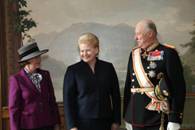
President Dalia Grybauskaitė at the Norwegian Royal Palace, where she met with King Harald V and Queen Sonja
After the meeting with the Royal Family, the President gave a lecture ‘Energy Geopolitics: Reasons and Achievements of Nordic-Baltic Cooperation' in the Norwegian Institute of International Affairs, dealing with geopolitical aspects of energy-related problems in Europe and underlining the need and mutual benefit of promoting active cooperation with Norway and other Nordic countries. The President also answered questions put by the students, the professoriate and guest experts.
"By this first state visit to Norway I wanted to underline and draw attention to the fact that the Northern dimension is one of Lithuania's foreign policy priorities and that our relations with Northern Europe are acquiring a shape of a very concrete and productive dialogue. Lithuanian-Norwegian relations are a perfect example of cooperation based on interests of the two peoples. Norway's political and financial support to Lithuania is very valuable and we have very good prospects of cooperation in the field of energy," President Dalia Grybauskaitė said.
Grybauskaitė also had a meeting with the President of the Storting (the Parliament) and Norway's Prime Minister Jens Stoltenberg.
During the visit, memorandums of understanding concerning the implementation of the Norwegian and the European Economic Area (EEA) Financial Mechanisms 2009-2014 providing for support in the amount of 84 million euros to Lithuanian projects, and a bilateral agreement concerning the transfer of sentenced offenders to serve sentence in their home country were signed.
Sad to see, though, that Norwegian media hardly have mentioned the visit.
- Bookmark :
- Digg
- del.icio.us
- Stumbleupon
- Redit it
- Posted by - (2) Comment
|
|
Text and photos: Aage Myhre
|
|
|
MADHUR ROY waits for me at the Delhi International Airport when I fly in from Mumbai in the late evening. She represents the Ministry of Foreign Affairs, and has been given the responsibility to show me around and introduce me to people I have special interest in meeting during my visit. On the way to the hotel she tells me about the programme. She also talks about her hobbies; filmmaking and singing. During my days in Delhi, she does a very good job, every day from early morning to late evening. A few days later, on the way to the airport, she sings a quiet, melodic song about herself, a song about the little girl from a village up in the mountains far to the north who came to live in the big city. I see tears rolling down her cheeks, and I feel very touched having got to know a person who not only performs her job in a very professional manner, but also dares to show her feelings in such a way. My visit to India got a new dimension after the meeting with Madhur. Thanks a lot!! |
|
|
|
INDIA India, officially the Republic of India, is a country in South Asia. It is the world’s seventh-largest country by geographical area, the second-most populous country with over 1.18 billion people, and the most populous democracy in the world. Mainland India is bounded by the Indian Ocean on the south, the Arabian Sea on the west, and the Bay of Bengal on the east; and it is bordered by Pakistan to the west, the People's Republic of China, Nepal, and Bhutan to the north; and Bangladesh and Burma to the east. India is in the vicinity of Sri Lanka, and the Maldives in the Indian Ocean, its Andaman and Nicobar Islands are also in the vicinity of the Indonesian island of Sumatra in the Andaman Sea, and in the Andaman Sea India also shares a maritime border with Thailand. India has a coastline of 7,517 kilometres (4,700 mi). |
Home to the ancient Indus Valley Civilisation and a region of historic trade routes and vast empires, the Indian subcontinent was identified with its commercial and cultural wealth for much of its long history. Four major religions, Hinduism, Buddhism, Jainism and Sikhism originated here, while Zoroastrianism, Judaism, Christianity and Islam arrived in the first millennium CE and shaped the region's diverse culture. Gradually annexed by the British East India Company from the early eighteenth century and colonised by the United Kingdom from the mid-nineteenth century, India became an independent nation in 1947 after a struggle for independence that was marked by widespread non-violent resistance.
India is a federal constitutional republic with a parliamentary democracy consisting of 28 states and seven union territories. Apluralistic, multilingual and multiethnic society, India is also home to a diversity of wildlife in a variety of protected habitats. The Indian economy is the world's eleventh largest economy by nominal GDP and the fourth largest by purchasing power parity.
Since the introduction of market-based economic reforms in 1991, India has become one of the fastest growing major economies in the world; however, it still suffers from poverty, illiteracy, corruption, disease, and malnutrition. India is classified as a newly industrialised country and is one of the four BRIC nations. It is a nuclear weapons state and has the third-largest standing armed force in the world, while its military expenditure ranks tenth in the world. It is a founding member of the United Nations, the East Asia Summit, the South Asian Association for Regional Cooperation and the Non-Aligned Movement and a member of the Commonwealth of Nations and the G-20 major economies.
|
|
DELHI (official name: National Capital Territory of Delhi - NCT) is the largest metropolis by area and the second-largest metropolis by population in India. It is the eighth largest metropolis in the world by population with more than 12.25 million inhabitants in the territory and with nearly 22.2 million residents in the National Capital Region urban area The name Delhi is often also used to include some urban areas near the NCT, as well as to refer to New Delhi, the capital of India, which lies within the metropolis. It is the capital of India and its political and cultural centre. Located on the banks of the River Yamuna, Delhi has been continuously inhabited since at least the 6th century BCE. |
|
|
MUMBAI, also known as Bombay is the capital of the Indian state of Maharashtra. It is the most populous city in India, and one of the most populous cities in the world, with a population of approximately 20 million. Along with the neighbouring urban areas, including the cities of Navi Mumbai and Thane, it is one of the most populous urban regions in the world. Mumbai lies on the west coast of India and has a deep natural harbour. Mumbai is also the richest city in India, and has the highest GDP of any city in South or Central Asia.
|
|
|
|
|
|
|
||||||||||||
![]() Incredible business growth
Incredible business growth

Geeta and Gulu Mirchandani in their beautiful Mumbai home
During my stay in Mumbai I get one night invited to the home of Geeta and Gulu Mirchandani. Gulu is an old acquaintance who since 1981 has developed and been in the forefront of the electronics giant ONIDA (Mirc Electronics). I consider Gulu one of the masterminds behind the impressive development India's economy has undergone over the last 30 years. He is also one of those behind the initiative 'Mumbai Angels' that provides a unique platform to start-up companies by bringing them face to face with successful entrepreneurs, professionals and executives, also helping with start-up funding. I believe this kind of support and team-work is what brings India quickly forwards in today’s harsh economic climate. Ref. www.mumbaiangels.com
|
|
The Gross Domestic Product (GDP) in India expanded at an annual rate of 8.80 percent in the 2nd quarter of 2010. From 2004 until 2010, India's average quarterly GDP Growth was 8.37 percent reaching an historical high of 10.10 percent in September of 2006 and a record low of 5.50 percent in December of 2004. India's diverse economy encompasses traditional village farming, modern agriculture, handicrafts, a wide range of modern industries, and a multitude of services. Services are the major source of economic growth, accounting for more than half of India's output with less than one third of its labour force. The economy has posted an average growth rate of more than 7% in the decade since 1997, reducing poverty by about 10 percentage points.
|
- Bookmark :
- Digg
- del.icio.us
- Stumbleupon
- Redit it
- Posted by - (21) Comment
![]() Incredible Indian-Lithuanian relations
Incredible Indian-Lithuanian relations

Professor Lokesh Chandra (84), one of India’s leading experts on Sanskrit and Buddhism
It’s early morning in Delhi. I have been invited to the small, dark office of Professor Lokesh Chandra, one of India’s leading experts on Sanskrit and Buddhism. “The same year I was born, 1927, my father went to London to get a degree in Lithuanian language. He spoke the language fluently, but he never visited Lithuania,” tells the elderly professor, still with his Kashmir coat and cap on despite the outside temperature of close to 300 Celsius.
I soon learn that the professor’s knowledge about the connections between Old Sanskrit and Lithuanian language and ancient cultural ties between India and Lithuania is nothing but amazing. He confirms that there since ancient times have been unique ties between India and Lithuania, not only with regards to language. Also the songs, the medieval cultures and more were extraordinary closely connected to each other.
Here is what he tells me this early morning at his New Delhi office: “The very mention of Lithuanian opens up an image, a vision that gives a people their identity through language. It shows how the darkness of dreams becomes the new embodied hope. My father was stimulated and strengthened in his work on the development of Hindi by the history of Lithuanian language. It has been the eternal continuity of these people; - it rustles something deep in their being. My father felt that we in India share with our distant Lithuanian brothers the silent geography of lost frontiers. Political freedom is inseparable from language.”
And the professor continues with his amazing story: “My father would relate how grandmas in the remote villages narrated folk-tales to eager grandchildren in their Lithuanian language which was despised by the Slavised nobility and punished by the Czarist regime. My father also told me how the Lithuanian daina (songs) were abandoned by the courts, but still continued to live on in the villages, faithfully preserved by the poorest people of Lithuania, guarded by the mothers of the families even during the darkest periods of Lithuania’s history.”
“Such was my first contact with Lithuania, in 1937, at an age of ten,” smiles Professor Chandra.

![]() Sanskrit and Lithuanian are closely related
Sanskrit and Lithuanian are closely related
Since the 19th century, when the similarity between Lithuanian and Sanskrit was discovered, Lithuanians have taken a particular pride in their mother tongue as the oldest living Indo-European language. To this day, to some Lithuanians their understanding of their nationality is based on their linguistic identity. It is no surprise then that they proudly quote the French linguist Antoine Meillet, who said, that anyone who wanted to hear old Indo-European should go and listen to a Lithuanian farmer. The 19th century maxim - the older the language the better - is still alive in Lithuania.

Professor Shashiprabha Kumar, and her amazing team of specialists at the Centre for Sanskrit Studies at the Jawaharlal Nehru University in New Delhi, is convinced that there is a very strong connection between Old Sanskrit and Lithuanian
It is a common belief that there is a close similarity between the Lithuanian and Sanskrit languages; Lithuanian being the European language grammatically closest to Sanskrit. It is not difficult to imagine the surprise of the scholarly world when they learned that even in their time somewhere on the Nemunas River lived a people who spoke a language as archaic in many of its forms as Sanskrit itself. Although it was not exactly true that a professor of Sanskrit could talk to Lithuanian farmers in their language, coincidences between these two languages are truly amazing, for example:
SON: Sanskrit sunus - Lithuanian sunus
SHEEP: Sanskrit avis - Lithuanian avis
SOLE: Sanskrit padas - Lithuanian padas
MAN: Sanskrit viras - Lithuanian vyras
SMOKE: Sanskrit dhumas - Lithuanian dumas
These Lihuanian words have not changed their forms for the last five thousand years.
The relationship between Sanskrit and Lithuanian goes even deeper. Take, for example, the Lithuanian word 'daina' that usually is translated as 'song'. The word actually comes from an Indo-European root, meaning ‘to think, to remember, to ponder over’. This root is found in Sanskrit as dhi and dhya. The word also occurs in the Rigveda (ancient Indian sacred collection of Vedic Sanskrit hymns) in the sense of ‘speech reflecting the inner thoughts of man’.
Apart from its Indo-European background as word and term, the ‘daina’ incorporates the idea of the Sun-Goddess who was married to the Moon-God, reminiscent of goddess Surya in the Rigveda.
|
|
OM (also spelled AUM) is a Hindu sacred sound that is considered the greatest of all mantras. The syllable OM is composed of the three sounds a-u-m (in Sanskrit, the vowels a and u combine to become o) and the symbol's threefold nature is central to its meaning. |
- Bookmark :
- Digg
- del.icio.us
- Stumbleupon
- Redit it
You have presented a wonderful overview of India
- Posted by - (0) Comment
![]()

Madhur Roy
First of all a VERY BIG THANK YOU. I never ever imagined in the wildest of my dreams, that you would allow space for me in the esteemed VilNews. I am overwhelmed! It’s been one of the best birthday gifts, I must say.
As far as the content is concerned, you have presented a wonderful overview of India. No doubt India is much more then one could comprehend, nevertheless, you have very articulately in a compact manner put forward India as a whole, which as per my perspective is enough to understand the magnanimity of the country.
It’s been an honour!!
Madhur Roy
Delhi, India
- Bookmark :
- Digg
- del.icio.us
- Stumbleupon
- Redit it
As a person with Lithuanian roots it makes me proud to have some kind of connection to the greater humanity called India
- Posted by - (0) Comment
This is just so fascinating ! I have a love for India and the contrasts that I experienced there. It is a land like no other and one that no one can prepare you for when you land there.
The smells, taste and feel is and only belongs to India – a place I deeply respect. Whose people have an essence and a space in time that the West cannot imagine.
Thank you so much for sharing this. As a person with Lithuanian roots it makes me proud to have some kind of connection to the greater humanity called India.
Kim Feinberg
Johannesburg, South Africa
- Bookmark :
- Digg
- del.icio.us
- Stumbleupon
- Redit it
Thank you for this and many other marvellous articles. After perusing them, I take the liberty of sending them to over seventy friends all over the world.
Yours very sincerely,
Ambassador Algirdas Zemaitis
Rome - Vilnius
- Bookmark :
- Digg
- del.icio.us
- Stumbleupon
- Redit it
![]()
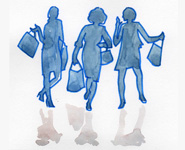
In February 2011, compared with January 2011, the volume of retail trade fell by 0.1% in both the euro area (EA17) and the EU27. In January retail trade rose by 0.2% and 0.4% respectively.
Among the Member States for which data are available, total retail trade fell in eleven and increased in ten. The largest decreases were observed in Slovenia (-1.3%), France (-1.1%) and Belgium (-0.8%), and the highest increases in Lithuania (+2.2%), Malta(+1.8%) and Estonia (+1.6%).
In February 2011, compared with February 2010, the retail sales index grew by 0.1% in the euro area and by 0.9% in the EU27.
In February 2011, compared with January 2011, “Food, drinks and tobacco” remained stable in both the euro area and the EU27. The non food sector decreased by 0.1% and 0.4% respectively.
In February 2011, compared with February 2010, “Food, drinks and tobacco” fell by 0.5% in the euro area and by 0.9% in the EU27. The non food sector increased by 0.9% and 2.4% respectively.
Among the Member States for which data are available, total retail trade rose in thirteen and decreased in eight. The highest increases were observed in Poland (+12.6%), Luxembourg (+8.8%) and Lithuania (+6.1%), and the largest decreases in Spain (-5.6%), Romania (-4.8%) and Portugal (-4.5%).
These first estimates come from Eurostat, the statistical office of the European Union.
- Bookmark :
- Digg
- del.icio.us
- Stumbleupon
- Redit it
Poll shows major drop in support for nuclear power in Lithuania after Fukushima catastrophe
- Posted by - (0) Comment
By: The Associated Press
A new poll shows nearly half of Lithuania's population have turned against nuclear energy following the catastrophe at a Japanese reactor.
A poll for Lithuanian magazine Veidas released Monday showed 88 per cent of Lithuanians, traditionally supportive of nuclear power, now oppose plans to build a new power plant — an increase of 47 per cent since January.
Some 42 per cent of those polled said the Fukushima Dai-ichi disaster had made them change their minds.
The March 28-30 poll surveyed 500 people and had a margin of error of 3 per cent.
Lithuania was one of the world's most nuclear-energy dependent countries before it closed its Soviet-era plant in Ignalina and has over some time been planning to build a new nuclear facility.
- Bookmark :
- Digg
- del.icio.us
- Stumbleupon
- Redit it
![]()
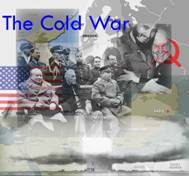
Selected reports from the press in central Europe
WARSAW
Gazeta Wyborcza:
Poland-Lithuania relations reach new low
Relations between EU members Poland and Lithuania have been soured by legislation in Lithuania that, according to Poland, will worsen public education opportunities for the Polish ethnic minority there.
Rzeczpospolita:
World Jewish Congress calls for Poland boycott
Until Poland adopts property restitution laws allowing its former Jewish citizens to regain their real estate lost during and after World War II, the Jewish community should stop buying Polish products or visiting the country as tourists, said Menachem Rosensaft, chief lawyer of the World Jewish Congress. The Polish government said the country’s former citizens can use existing legal possibilities, petitioning courts and the public administration to regain any property they lost.
Read more at:
http://blogs.wsj.com/new-europe/2011/03/31/from-the-headlines-march-31-2011/
- Bookmark :
- Digg
- del.icio.us
- Stumbleupon
- Redit it
1 April is Užupis’ Independence Day!
- Posted by - (0) Comment
It’s again set for party and celebration of the independent Republic of Užupis in Vilnius. Fourteen years have passed since this centrally located city district declared secession and independence from the Republic of Lithuania, and 1 April 1997 is now celebrated every year as the very Constitutional Date of this genuine, fascinating bohemian republic right on the other side of the river Vilnia. It takes no more than five minutes to walk there from the old town of Vilnius, so on Friday afternoon this week, all of you, dear VilNews readers, are warmly welcome to participate in the spring’s biggest and most colourful festival here in Vilnius!

The name Užupis means simply ‘the other side of the river’. There are several bridges over the river, but I recommend you to use the Užupis Bridge. This almost 20-meter long bridge, built in 1901, is a piece of art in itself, also characterized by the many padlocks attached to the wrought iron rails, hung there by hundreds of newly married couples confirming their wedlock promises. Use the left sidewalk when you cross the river, and when you are well up on the bridge, you should stop and look down and left. For there she sits, the little bronze mermaid guarding the entrance to Užupis. She sits there in a niche in the brick wall, only a few feet above the river that runs rough and powerful now in these times of spring, studying the many guests at the outdoor deck of the Užupis Cafe already well underway with springtime foaming beer mugs filled to the brim with amber-golden beverages imported from the neighbouring Republic of Lithuania.
It is not unlikely that you must be equipped with a visa to enter Užupis on this very special day. But both passport and customs control tend to go quickly, so no reason to despair. Even the 12-man army seems to be more concerned with getting people inside the borders than to defend the Republic against intruders. Well within the Republic’s external border, you soon realize that you’ve come to the land of smiles. During the walk up to the angel square that forms the centrepiece of the Republic you have to expect crowds of happy people who are here to celebrate this extraordinary national day, and if you’re lucky, you will meet at least one person wearing a long red gown . This outfit is reserved for the Republic’s leaders, be it the President or one of its ministers, and it may even be that one of them will be willing to accept sharing a small glass of something with you in one of the many bars and restaurants surrounding the Republic’s main routes.
But, by all means, stay not only in the main streets, for it is in the courtyards and back streets you’ll find many of the galleries, the special ‘decorations’, the music, scents, mystery and human life that makes Užupis to such a special place on earth.
As dusk slowly comes this Maundy Thursday early evening, I am convinced that you will have already made new acquaintances among the crowds of happy, hugging and colourful individuals from many countries and the Republic itself that all are here now to celebrate the Independence Day. You are probably already a part of the almost southern rhythms that characterize Užupis today, and when you together with your new friends finally reach the angel who stands firmly on its high pedestal in the centre of the main square, you realise that today he is far from the only one who blows the horn. Today he is surrounded by vibrant singers and musicians of many kinds, and when darkness finally falls it is right here tonight’s big show takes place in powerful expression of exceptional talent and swinging rhythms.
Užupis is still an urban area characterized by dilapidated buildings, but when the music reverberates over the cobbles this late spring evening, I am convinced that you will have fallen in love – with this unique part of Vilnius city, with the Republic, with the atmosphere and with all the happy people around you. When you at late night again cross the river Vilnia I think you’re going to do it with a big smile and renewed appreciation of the exceptionally exciting adventures and stories Lithuania has to offer…
Aage Myhre
VilNews Editor
Ambassador of the Republic of Užupis
|
|
|
|
|
|
The Republic of Užupis
Užupis is one of the oldest districts of Vilnius, mentioned in historical sources as far back as the 16th century. Once it was called the “salt road” to Polock. In olden times it was the suburb where the poor and mainly craftsmen, lived. There were many mills and at one time it was even known as a brothel district.
The district contains the Bernadine Cemetery, one of the oldest in Vilnius. Most of the district’s Jewish population vanished during the Holocaust, and later even the old Jewish Cemetery would be destroyed by the Soviets. The houses left empty by the Holocaust were occupied by marginal elements of society, the homeless, and prostitutes.
Until Lithuania’s declaration of independence in 1990, it was one of the most neglected areas in the city, containing many run-down houses, many without utilities.
Today the district houses art galleries, artists’ workshops, and popular cafés. On April Fools Day in 1997, the district declared itself an independent republic (The Republic of Užupis), replete with an army of 12 personnel.
Užupis is a unique republic. A colourful and alive island, separated from the city by the Vilnia River that once gave name to the city itself. Užupis is a recognised district for artists and has won the name of the most mysterious and romantic district of Vilnius. Užupis is the artists’ republic, which has its own constitution (see below), national anthem, calendar and map. The district is often compared to Montmartre in Paris due to its bohemian atmosphere.
Užupis has its own President, Prime Minister, Ambassadors from many countries of the world, military force (consisting of 12 people), a bishop, two churches, the Bernardino cemetery, which is the oldest cemetery in Vilnius, seven bridges and a wonderful patron saint– the bronze Užupis Angel erected in its main square…
Užupis has its honorary citizens. They are such famous people as his Holiness, the Dalai Lama, former President of the Republic of Lithuania, Valdas Adamkus, artist Jonas Mekas and many others. Užupis has its own holidays – the Day of Užupio Independence, the Day of the Fish, the Day of Traps, the Day of White Tablecloths, etc., as well as its own traditional way of celebrating these holidays.
If you walk along the banks of the Vilnia River, you will be sure to come across artists working there. Passers-by are invited to have a try at the various kinds of art, like photography and painting, or to take part in an evening of summer cinema or exhibitions.
Everyone can find interesting places and corners in Užupis. One of them is the Užupis Bridge where lovers hang padlocks with their names engraved on them. The padlock is believed to tie and strengthen the hearts of two young people in love.
Some works of art have become symbols of Užupis:
|
|
The Užupis Angel This is a sculpture placed on an 8.5-meter high column, which was unveiled in the Užupis Square in 2001. The Angel, created by sculptor Romas Vilčiauskas and architect Algirdas Umbrasas, is made of brass and bronze. |
|
|
The Užupis Mermaid This is a bronze sculpture by Romas Vilčiauskas that can be seen on the bank of the Vilnia River at the Užupis Bridge near the Užupis café. In 2004, the mermaid was swept away by the rising water of the river. However, the sculpture was recovered and returned to its place. |
The Užupis Constitution
- Bookmark :
- Digg
- del.icio.us
- Stumbleupon
- Redit it
How did you get over there, to Lithuania?
- Posted by - (1) Comment
by KR Slade

Village Chief’s house
{Responding to two (2) E-mails, received on the same day of spring 2006. One from a former classmate from my university graduate-school (Boston, Massachusetts), whom I’ve not seen in 35 years . . . who probably has no idea where is or what is Lithuania . . . The second from an old political protégé (Ottawa, Canada), from my days working with Canada’s Official Languages groups, whom I’ve not seen in 6 years . . . who probably has no idea where is or what is Lithuania . . . }
………………………………………………………….…………………………
Subject: How did you get over there?
I joined our Alumni network and pulled up a list of graduates from the 70’s years. Boy, was I surprised to see your email address and even more surprised to see your location. What are you doing in Lithuania, there?
. . .
Take care. It is good to know what Alumni are up-to these days !!
How did you get to way over there to Lithuania ??
Dianne
Rhode Island (USA)
……………………………………………………………………………………
Subject: How did you make your journey to Lithuania?
Dear Ken,
It has been a very long time since we have communicated ! I found your coordinates on a Canadian government website.
Here in Canada, we . . .
I thought of you the other day. I read that Lithuania has become a member of the European Union. But I thought that European Union was for only countries in Europe.
. . .
So please tell me about your trip to Lithuania.
Yours truly,
John
Ontario (Canada)
…………………………………………………………………………………….
Dear Dianne and John,
I write to both of you because I received your e-mails on the same day . . . although you do not know each other, I think that you are both asking me the same question: about ‘where is Lithuania’, and ‘how did I get here’.
John — what a nice surprise to hear form you ! I think that it must be some half-dozen years since we have last met, with our work for the government of Canada, in Ottawa, when we both preferred the French restaurants in Hull; eh?
Dianne — what a nice surprise to hear from you ! And after all these years — more than 35 !!! Your town, there, in RI . . . is 4-miles-south from where I was born and grew up; and 20-miles-north of where I lived and practiced law for 15 years, before I moved to Québec City, Canada. Two-and-a-half years ago I came to Lithuania. I be writer [J)], and I ‘re-teach’ English-language to some people who think that they can speak/write/teach English . . .
You both ask: “how did I get all the way over to LT ?” Well, I remember my trip, as if it were yesterday; it was quite the voyage . . .
There was the 11-hour plane ride, to cross the Atlantic Ocean. But once on this ‘new’ side, because LT is so far from any ‘other place’ (there are still no direct flights to here, from anywhere !) — it took at least another 11 days (I stopped counting then), going to smaller and smaller cities . . . then towns . . . then villages. But, of course, some of these smaller landing strips, in farmer’s fields, do not have daily, or even ‘regular’, airplane service; so, we had to wait a day-or-two between stopovers, to try to convince some small-plane pilot to fly in this direction.
Unfortunately, the stress of travel and deprivations caused some family problems. The wife and kid had been constantly complaining for more than a week. Nag, nag, nag; and cry, cry, cry. Finally, I could not stand it any longer. I went to the local market place to find some peace and alcohol. There I met a very friendly and accommodating chap, who was knowledgeable in all kinds of affairs.

A friendly local
I told him about my problem and he promised a quick and mutually profitable resolution. A few days later when I woke up in his cousin’s marketplace vegetable wagon, my new friend told me that he had solved the problem. We went to his other cousin’s barn. I do admit that I was somewhat surprised at first. The wife and kid had been bronzed. At least this solution was more civilized than having to sell them to the headhunters. It was such a good job technically, since they seem so life-like, that we were able to sell the statue-set to a distant tourist resort, at a tidy profit. Apparently, this is common in these parts, where history precedes the Bronze Age.

When I landed at the final outpost of civilization, I needed to rest for a few days . . . because of the changes in altitude, food, and water, and my total travel-fatigue. The second night, in my room — in what they called ‘a hotel’, I could not read the very foreign-language sign on the window; so I opened it for the night, not knowing that this was a very dangerous thing to do.
The next morning I was very sick. A doctor came, after a few days, and he said that I may have suffered an historical ‘ethnic-déjà-vu’ attack: by a Livonian, or Prussios, or Svedas, or Rus invasion. He did not know precisely which illness, so he gave me the Native’s Samagonas medicine for all-four afflictions. I had a delirious ‘fever’ for many days (I never did learn actually how long), but then one day I woke up and I was completely well. So, I continued my journey towards Lithuania.
In the village, I managed to find a man from the perceived-extinct Curonian tribe, who could guide me across the Juozapines Mountains, through the Paksas Pass – which is especially difficult at that particular time of year. The local Natives had said that he had reliably done this transit many times, and that he had two good, but rather old, elephants to make the journey. I had never actually seen a real elephant before, and sitting up there on top was rather disturbing; but he knew that it would be a problem for me. When I complained about the height of sitting up there so high, he laughed ! He told me that this was the SMALL elephant ! (It was a female.)
While I was perched, there in the carriage-basket seat, becoming to my new situation, he brought the other elephant: the male. It was very scary: sitting on top of an elephant, and then looking UP, at another elephant ! My guide loaded all of my baggage and equipment onto the male elephant. We began what was to be our 18-hour journey over the mountains. What was very providential was the fact that since this time of year was the elephant-mating season, it was appropriate to have the female go first, and not necessary to tie a cord to the other/trailing elephant . . . and our pace was quick.
In the early morning hours, as we were descending the mountain into the Zauskaus Plateau below, there was a terrible accident. Our (smaller) elephant had no problem negotiating a sharp turn on a particularly steep mountain slope. But, the larger male, somewhat more blinded perhaps in his old age, slipped. It was a horrible sight. Worse for us, was the female thereupon galloping down the mountain … to find . . . and to be with . . . her long-time mate . . .
I learned why, when riding an elephant in the mountains, that passengers are tied to the carriage (riding basket, called ‘a coalition’). . . An excited elephant . . . is going to do . . . what an excited elephant wants to do . . .
Once at the bottom of the mountains, at the poor now-dead beast, we finally were able to manage to dismount. It was good to be once-again on firm ground. We unloaded our baggage from the dead male. Although I could not understand the ancient language of my guide, it was obvious that the female was going to remain with her mate; and therefore, it was evident that we were stranded.
The next day, a gypsy caravan passed by, and they accepted us, and all of my baggage, to travel across the Neringa Desert, towards Lithuania. It was a very long, but more exceedingly calm journey. They were nice people, but now I know why it is better to travel by elephant, rather than by camel. Although the perceived interminably long journey through the desert, and then following the long River Will-Not, was uneventful, I came to the politically incorrect opinion that camels are disgusting.
Finally, we came to The Great River Ignominious. There, I was able to obtain the services of a river guide who would take my baggage and me down the river to Lithuania. It was a slow, but very peaceful and lovely trip. The crocodiles were not really a problem, because they are actually very shy – if they are slapped with an oar, they will swim away. But, on the second day, there was the terrible incident of our somewhat-careless raft-helper who fell into the waters. Even before we could throw a rope to him, he was eaten by the swarms of little fishes that devour any living being that enters their watery world. Perhaps you have heard something of this; yes, it is all true; even the movies cannot reflect a real representation of this horrendous event . . .
I finally arrived in the land of Lithuania, then made my way onward, first to Cowness Village, and then further to the capital-village, called Will-Not. I soon settled into a somewhat normal life, relatively speaking. I decided not to live in the capital-village mud-hut houses that surround the Parliament (preposterously called ‘The Same-Us’). I soon found quite suitable lodging in a relatively more-improved dwelling in a mountainside, called Antakalnis, an ancient cave-carved habitat area that was formerly occupied by other writers. From here, I have a very nice view of the tranquil capital-village below, and the presumed-tranquil Ignalina Volcano in the distant beyond.
The people of Lithuania are nice; well, all of the 3.5 million people – except for the Oligarchs Tribe, which has never been more than 5 percent of the population. Lithuania is a peaceful country; well, all of Lithuanian – except for the on-going daily riots in ‘The Same-Us’, but that is only some fourteen-score of persons (and a few thousand of their so-well dispersed comrades), whom will perhaps soon be transferred to a more secure facility, close by, where their scandals will no longer have a monopoly on the news. Crime is low, by north American standards; but, as everywhere, you never know . . . there could be a Mafiosi zany zilch bellicouseness across the street from ‘The Same-Us’, or a related rapacious apprentice/junior-Mafiosi-Wanna-Be on the other side of your wall . . . But, all-in-all, I love the Lithuanians; although, I know that I am genealogically/ethnically prejudiced !
My only luxury is a satellite Internet antenna dish and an electric generator. I’m so lucky that they both work; notably after they had fallen off the elephant, and thereafter also had descended into The Great River Ignominious, where with the help of the Natives, all of the equipment was salvaged, and was able to be repaired, after some months of work.
So, I have e-mail !!!
Please write again soon,
And I hope that you will visit . . .
Bye for now,
K

Dinner at the Village Chief’s house
- Bookmark :
- Digg
- del.icio.us
- Stumbleupon
- Redit it
VilNews e-magazine is published in Vilnius, Lithuania. Editor-in-Chief: Mr. Aage Myhre. Inquires to the editors: editor@VilNews.com.
Code of Ethics: See Section 2 – about VilNews. VilNews is not responsible for content on external links/web pages.
HOW TO ADVERTISE IN VILNEWS.
All content is copyrighted © 2011. UAB ‘VilNews’.

 Click on the buttons to open and read each of VilNews' 18 sub-sections
Click on the buttons to open and read each of VilNews' 18 sub-sections 







































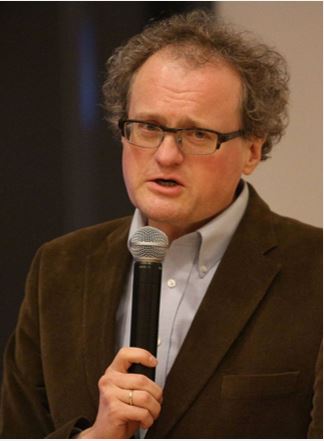
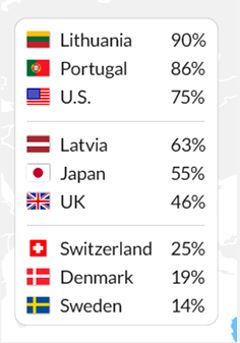
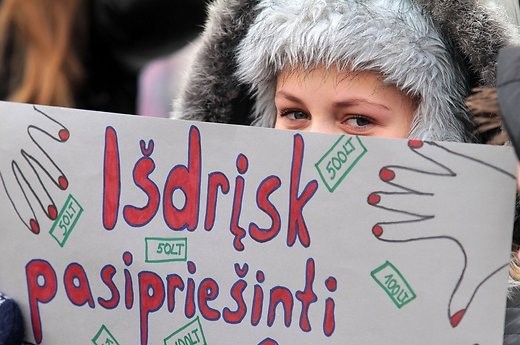
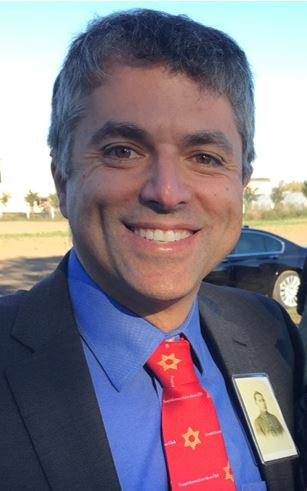

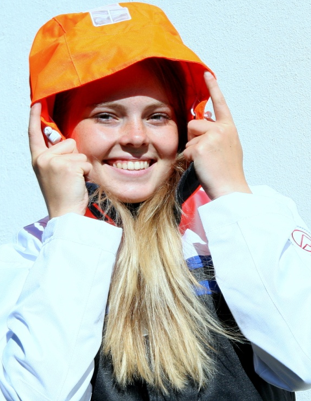
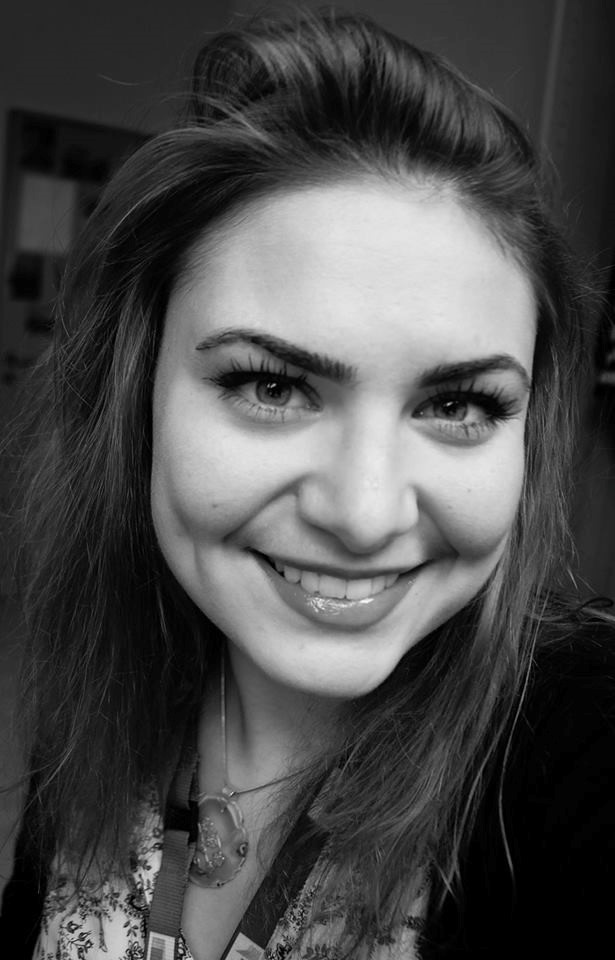
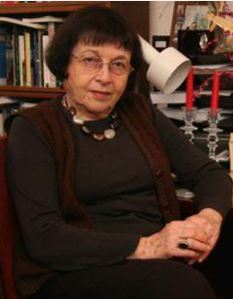
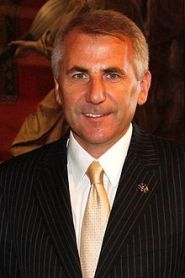
.jpg)
